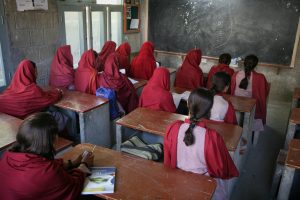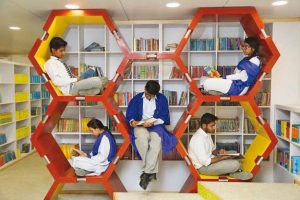
Pakistan’s Education System
Vol 25, Issue 08, 11 November 2022
Education in Pakistan can either be beneficial and act as a catalyst for students to achieve incomparably or makes it exceptionally hard for people to attain any level of position. Pakistan practices two kinds of education systems. One is the traditional – metric system and the other British Council or private education. These systems compete vigorously against each other, sometimes experiencing questions about the quality, merits and reliability of education offered.
The education from preschool to middle school is almost the same for everyone in the country. The only difference made is through the status of the school and the type of school. Schools like Beacon House and Lahore Grammer School are examples of high-status schools where ideologies of the foreign education systems are offered and are private schools. Students are prepared to learn rather than memorize the textbooks for exams and there is a clear difference between the opportunities provided to the students at these schools. Students are offered possibilities to take part in real-life projects and are encouraged to implement their projects and knowledge from a small age. Public schools are usually seen as a lower level of education though being the only possibility available for more than half the population of Pakistan. These schools have limited options, however, even educational activists like Malala Yousafzai was a student of a public school.
Major classifications between students are made during high school. The traditional public education system is the Metric and FSC system. Matric starts in the ninth grade and ends in the tenth grade. Students prepare for their finals at the end of the tenth grade.
The most stereotypical statement about the Metric and FSC system is that students practise the memorization method and do not try to understand the material itself. Then, FSC starts and that ends in the twelfth year. The final year students prepare for their board exams and the grades decide the universities they can get accepted to.
Secondly, there is the private education system. Students in the ninth grade enter the British education system and start preparing for their O level or GCSEs. There are two compulsory subjects that need to be completed in the first year before your next studies – Pakistan Studies and Islamiyat. In the following two years, students attempt the final exams in the British Council Center. After the results students start their A levels. The most common number of subjects chosen is three to five. Students can choose whatever combination they see fit and study. A level is completed in two years, hence making this education system one year longer than the traditional education system.
After high school, students apply to different universities and the programs they want. Usually, the merits are placed very high, and it is very difficult to get accepted, especially in the medical field. There are public, private, military and vocational universities available in Pakistan. Some of the famous universities are the University of Punjab, Forman Christain College, Aga Khan University and NUST. These universities differ in terms of type, tuition fee, location, and the courses that are offered.
A person can take various paths in Pakistan given they acquire a sufficient amount of money. Education is not covered by the state and tuition fees must be paid by everyone. The public education system of Pakistan is extremely underfunded that needs tremendous improvements. Technically, every Pakistani child should have access to free school, between the ages of 5 and 16. However, that is not the case as the government mainly invests in the military. Development in the education system and awareness will benefit the whole of Pakistan’s economy as it will anywhere else as well.
- Kouvola – A place to remember - 21st April 2023
- Supernatural – A Series Review - 14th April 2023
- Easy to cook recipes for students - 7th April 2023


